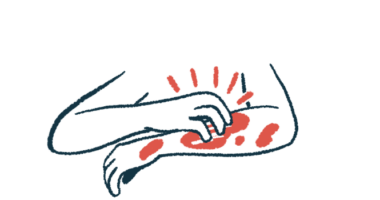Prognosis Good for Pediatric Autoimmune Blistering Diseases, but Long-Term Follow-up Needed, Study Says

Autoimmune blistering diseases, including epidermolysis bullosa, in children have a better prognosis than in adults, but long-term follow-up is necessary for adequate management due to frequent late relapses, a study suggests.
The study, “Long-term evolving profile of childhood autoimmune blistering diseases. Retrospective study on 38 children,” was published in the Journal of the European Academy of Dermatology and Venereology.
Autoimmune blistering diseases are a group of disorders in which the immune cells of the body attack the different layers of the skin causing blisters. The conditions receive different names depending on which part of the skin is attacked.
These conditions usually appear during adulthood, but there are some cases in children. Little is known about the evolution and occurrence of pediatric autoimmune blistering diseases.
Researchers at the Necker-Enfants Malades Hospital in Paris characterized the long-term evolution of 38 individuals who developed autoimmune blistering diseases before the age of 16. They started treatment at 4.9 years old on average and were treated between January 1993 and December 2015.
A total of 18 participants had linear immunoglobulin A disease, 10 had pemphigus, five had herpetiform dermatitis, four had bullous pemphigoid, and one had epidermolysis bullosa aquisita (EBA).
The researchers collected clinical data from the hospital database and obtained long-term data by performing a phone survey.
Patients received treatment for an average of 30.6 months. All patients were followed for at least one year, with an average follow-up of 6.6 years.
During the follow-up period, 29 patients had at least one relapse, including eight late relapses, defined as those occurring more than six months after initial healing. Most relapses occurred about three months after initial healing.
Treatment with corticosteroids applied to the skin led to a complete remission in seven patients (three with linear immunoglobulin A disease, three with bullous pemphigoid, and one with pemphigus).
A combination of topical corticosteroids and other medicines such as oral corticosteroids, dapsone, mycophenolate mofetil or Rituxan (rituximab) put another 19 patients in complete remission.
A total of 34 children (89%) achieved complete remission, 26 of whom were out of treatment by the last follow-up.
The outcome in children was better than in adults, where only a third of all cases achieve complete remission.
“Childhood [autoimmune blistering diseases] appear to be of good overall prognosis but a long-term follow-up is mandatory, as relapses can be late. The use of topical corticosteroids is frequently effective alone or in association,” the researchers wrote.
Two cases in the study were associated with underlying primary immune deficiency — a condition that weakens the immune system, making the individuals more susceptible to infections and diseases.
“In the pediatric population, and particularly when manifestations of auto-immunity occur very early in the life, the question of an underlying primitive [abnormal immune system] has to be considered,” the investigators said.
They also suggested that topical corticosteroids, rather than oral corticosteroids, should be the first line of treatment for pediatric autoimmune blistering diseases, although some conditions such as EBA and pemphigus often require oral treatment.






